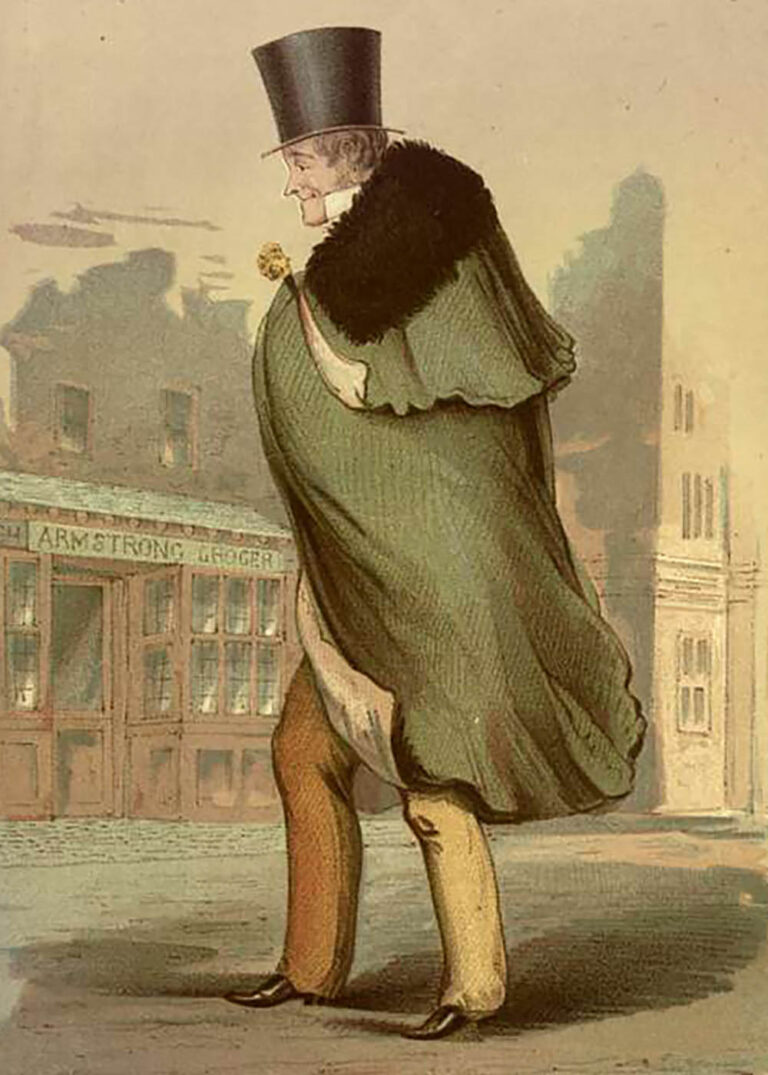Herrington was later charged for ‘having appeared on the Public Highway wearing upon his head a tall structure having a shining lustre and calculated to frighten timid people’.
Typically made of silk mounted on a felt base, the top hat has a high crown, a narrow, slightly curved brim and is usually black. Its use was championed by the English dandy George ‘Beau’ Brummel (1778-1840) who was a close friend of the Prince Regent and an innovator in men’s fashions. His ensemble, which generally comprised tailored breeches, spotless white shirts and exquisitely tailored jackets, was topped off by the top hat, causing a new craze and creating an excellent economic opportunity for the fur trade (for the production of the felt base).
Although several variations evolved – with flatter brims, or higher or lower crowns – the top hat remained true to its basic form, although it did grow exceedingly high; up to 30cm. When it became impossible for theatregoers to view the performances at the opera and theatre, official hat checkers were employed.

